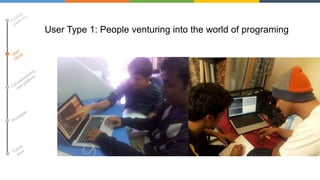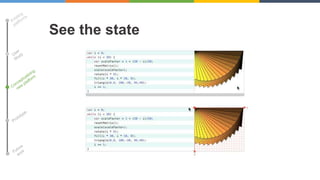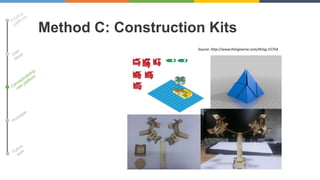This document discusses developing a new programming platform to teach algorithmic thinking and spatial reasoning through digital fabrication. It aims to make programming accessible to those with minimal computer knowledge by removing misconceptions and making it as simple as manipulating blocks. The methodology involves studying existing platforms like Logo and Scratch, conducting user studies, and conceptualizing a new platform that allows users to see program state, follow program flow, and create programs by reacting and abstracting. It will utilize constructionism and allow users to iteratively design, test and improve their creations. The document outlines initial prototype development and areas for future work such as interface design and testing.








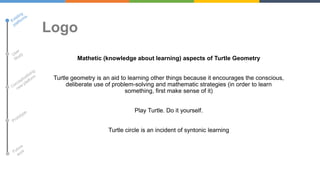
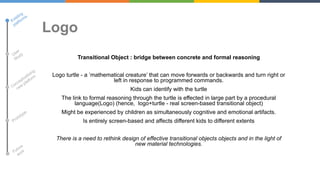

![Logo
‘Mathland’ as a cultural setting in which ideas of mathematics become
natural, personalized, and humanized
The idea of “talking mathematics” to a computer can be generalized to a view of
learning mathematics in “Mathland”; that is to say, in a context which is to learning
mathematics what living in France is to learning French. [Mindstorms, p. 6]](https://image.slidesharecdn.com/algorithmicthinkinganddigitalfabrication12-131123025757-phpapp02/85/Algorithmic-thinking-and-digital-fabrication-1-2-12-320.jpg)








